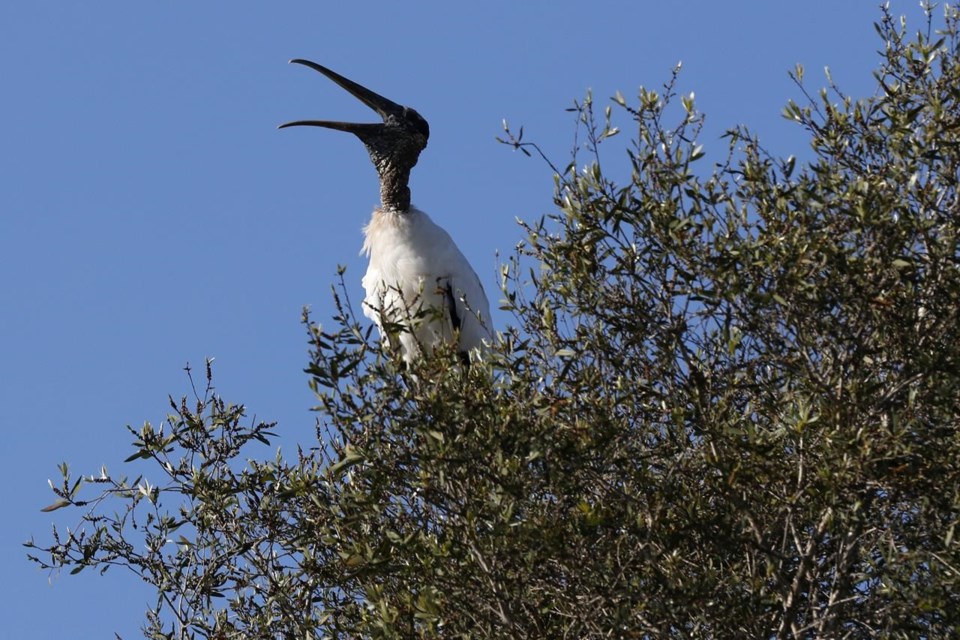ST. PETERSBURG, Fla. (AP) — The ungainly yet graceful wood stork, which was on the brink of extinction in 1984, has recovered sufficiently in Florida and other Southern states that U.S. wildlife officials on Tuesday proposed removing the wading bird from the endangered species list.
The U.S. Fish and Wildlife Service said in a that restoration of the wood stork's habitat, especially in the Florida Everglades and adjacent Big Cypress National Preserve, led to a sharp increase in breeding pairs. Those numbers had shrunk to just 5,000 pairs in 1984, whereas there are more than 10,000 pairs today.
“This iconic species has rebounded because dedicated partners in the southeast have worked tirelessly to restore ecosystems, such as the Everglades, that support it,” said Shannon Estenoz, assistant Interior secretary for fish, wildlife and parks.
In addition, the wood stork has increased its range in coastal areas of Mississippi, Alabama, Georgia and the Carolinas, officials said. The birds have adapted to new nesting areas in those states, tripling the number of colonies across their range from 29 to 99 in recent years.
Credit goes mainly to the wildlife protections provided by the which marks its 50th anniversary this year, said Stephanie Kurose, a senior policy specialist at environmental group the Center for Biological Diversity. The act can impose restrictions on a variety of activities in areas where such species are located, such as development, mining and oil drilling.
“The act saved the wood stork and it helped preserve and rebuild vital habitats throughout the southeast, which has improved water quality and benefited countless other species who call the area home," Kurose said by email.
Wood storks have a distinctive scaly, featherless gray head and a bright white feathered body with long skinny legs. They are fairly large, standing up to four feet (1.2 meters) tall and with a wingspan of up to 5 feet (1.5 meters). The nesting pairs lay three to five eggs per year, although the eggs are frequently targeted by predators such as raccoons and other birds.
Their bald heads give wood storks an almost prehistoric appearance, leading to nicknames such as “stonehead” and “flinthead.” Wood storks feed in shallow waters on fish, insects, frogs and crabs depending on whether it's wet or dry season. They are the only stork native to North America.
In Florida, federal and state governments are spending tens of billions of dollars for ongoing projects to restore natural water flows in the Everglades and Big Cypress and reduce harmful nutrients from fertilizer runoff and other sources that promote unhealthy plant growth.
The Endangered Species Act has saved 99% of the species that have been on the list since 1973, with 100 types of plants and animals delisted because they have recovered or are at least stable, according to the Interior Department.
“The proposed delisting of the wood stork is a significant milestone and a testament to the hard work by federal agencies, state and local governments, tribes, conservation organizations, and private citizens in protecting and restoring our most at-risk species,” Interior Secretary Deb Haaland said.
The Fish and Wildlife Service on the proposal through April 17 from other government agencies, scientists, environmental groups and anyone else interested in the welfare of the wood stork. After that, the service will publish a final decision on whether to remove the bird from the endangered species list.
If the wood stork is delisted, officials said it would remain protected by other laws including the Migratory Bird Treaty Act and the Clean Water Act. A monitoring plan would be put in place for at least five years to ensure the stork population remains stable.
Curt Anderson, The Associated Press



